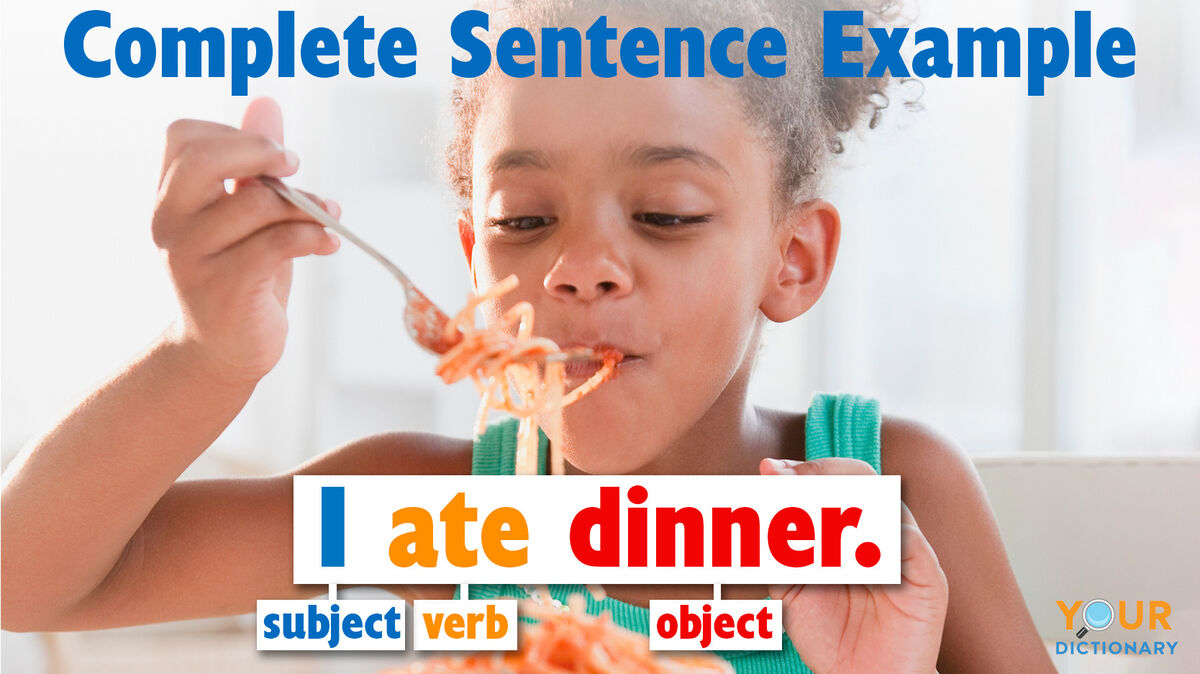
A complete sentence must have, at minimum, three things: a subject, verb, and an object. The subject is typically a noun or a pronoun. And, if there’s a subject, there’s bound to be a verb because all verbs need a subject. Finally, the object of a sentence is the thing that’s being acted upon by the subject.
What Is a Complete Sentence?
Beyond these basic elements, a complete sentence must also express a complete thought. We need to fully understand what’s happening. If a sentence is lacking a subject, verb, or object, it may be classified as a sentence fragment.
So, you might say, “Claire walks her dog.” In this complete sentence, “Claire” is the subject, “walks” is the verb, and “dog” is the object. (“Her” is simply a required pronoun in this example.)
Finally, examples of complete sentences need to start with a capital letter and end with some form of punctuation. So, at the end of a complete sentence, we’ll need a period, question mark, exclamation mark, or even a semi-colon. Consider the punctuation the finishing touch to any complete sentence. Without it, how do we know the sentence has come to an end?
A Word About Commas
At times, commas will also be integral in a complete sentence. They punctuate clauses within a complete sentence. For example, “Without her dog, Riley, Claire would be very sad.” Commas love to enter the scene whenever there’s a natural pause, or a clause, within a complete sentence.
Examples of Complete Sentences
Complete sentences come in many shapes and sizes. Although every sentence tells a story, some only require a scant number of words while others give a fuller description with commas and clauses. Let’s take a look.
- I ate dinner.
- We had a three-course meal.
- Brad came to dinner with us.
- He loves fish tacos.
- In the end, we all felt like we ate too much.
- We all agreed; it was a magnificent evening.
- I hope that, when I’ve built up my savings, I’ll be able to travel to Mexico.
- Did you know that, along with gorgeous architecture, it’s home to the largest tamale?
- Wouldn’t it be lovely to enjoy a week soaking up the culture?
- Oh, how I’d love to go!
- Of all the places to travel, Mexico is at the top of my list.
- Would you like to travel with me?
- Isn’t language learning fun?
- There is so much to understand.
- I love learning!
- Sentences come in many shapes and sizes.
- Nothing beats a complete sentence.
- Once you know all the elements, it’s not difficult to pull together a sentence.
Crafting a Sentence
The art of crafting a single sentence brings together subjects, verbs, and objects with cohesion. Punctuation also makes its mark, too. A period indicates a declarative or informative sentence. An exclamation mark indicates an exclamatory sentence. And, of course, our friend the question mark indicates an interrogative sentence. You’ve also got simple sentences that merely contain subjects and verbs, and more complex sentences that contain more than one clause, connected by commas, colons or semi-colons.
As long as you remember to include these crucial components -
and a healthy dose of punctuation – you’ll be well on your way to sentence mastery. A handful of words form a sentence. A handful of sentences form a paragraph. Before you know it, you’ve got the next great American novel in the works!